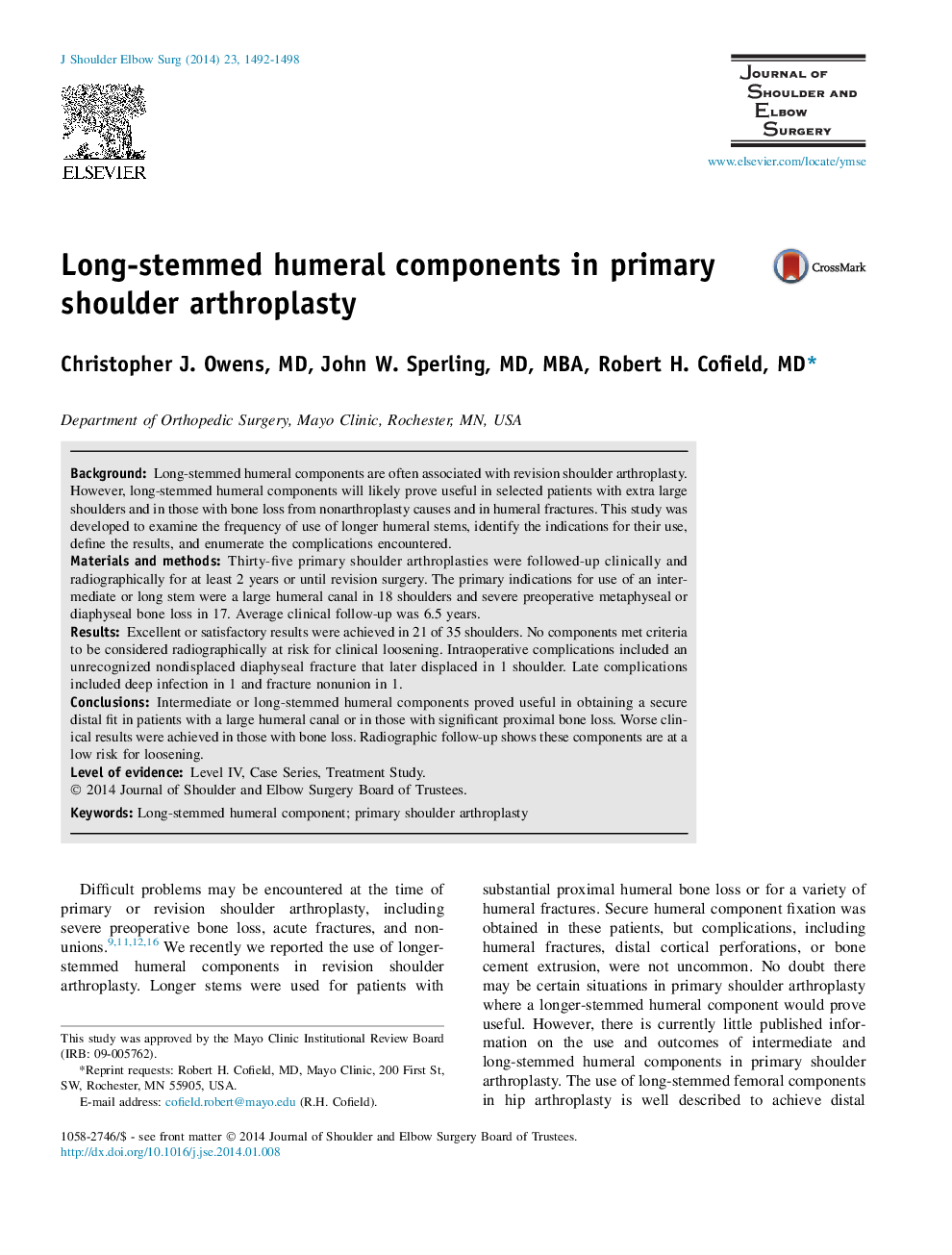| Article ID | Journal | Published Year | Pages | File Type |
|---|---|---|---|---|
| 4073772 | Journal of Shoulder and Elbow Surgery | 2014 | 7 Pages |
BackgroundLong-stemmed humeral components are often associated with revision shoulder arthroplasty. However, long-stemmed humeral components will likely prove useful in selected patients with extra large shoulders and in those with bone loss from nonarthroplasty causes and in humeral fractures. This study was developed to examine the frequency of use of longer humeral stems, identify the indications for their use, define the results, and enumerate the complications encountered.Materials and methodsThirty-five primary shoulder arthroplasties were followed-up clinically and radiographically for at least 2 years or until revision surgery. The primary indications for use of an intermediate or long stem were a large humeral canal in 18 shoulders and severe preoperative metaphyseal or diaphyseal bone loss in 17. Average clinical follow-up was 6.5 years.ResultsExcellent or satisfactory results were achieved in 21 of 35 shoulders. No components met criteria to be considered radiographically at risk for clinical loosening. Intraoperative complications included an unrecognized nondisplaced diaphyseal fracture that later displaced in 1 shoulder. Late complications included deep infection in 1 and fracture nonunion in 1.ConclusionsIntermediate or long-stemmed humeral components proved useful in obtaining a secure distal fit in patients with a large humeral canal or in those with significant proximal bone loss. Worse clinical results were achieved in those with bone loss. Radiographic follow-up shows these components are at a low risk for loosening.
